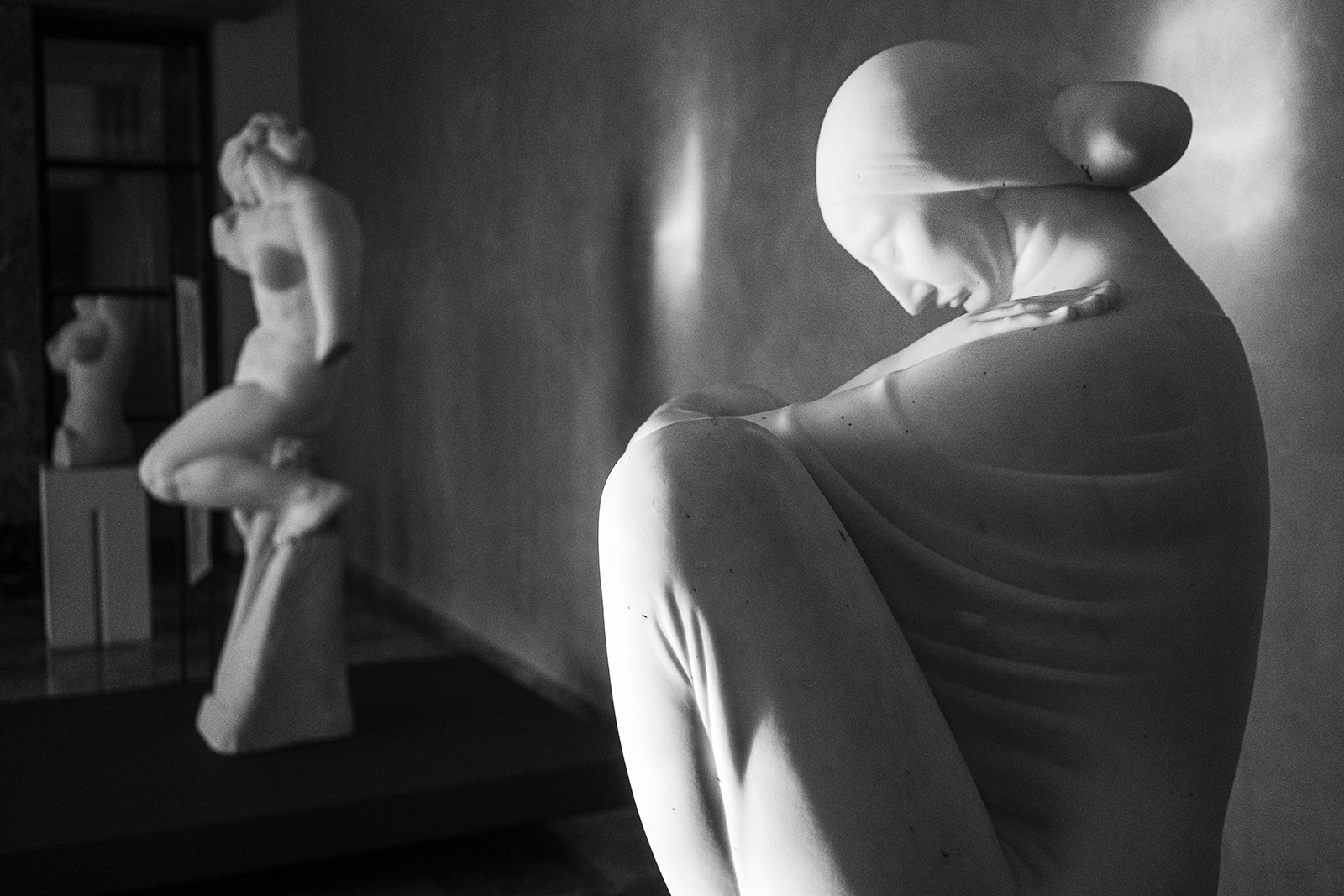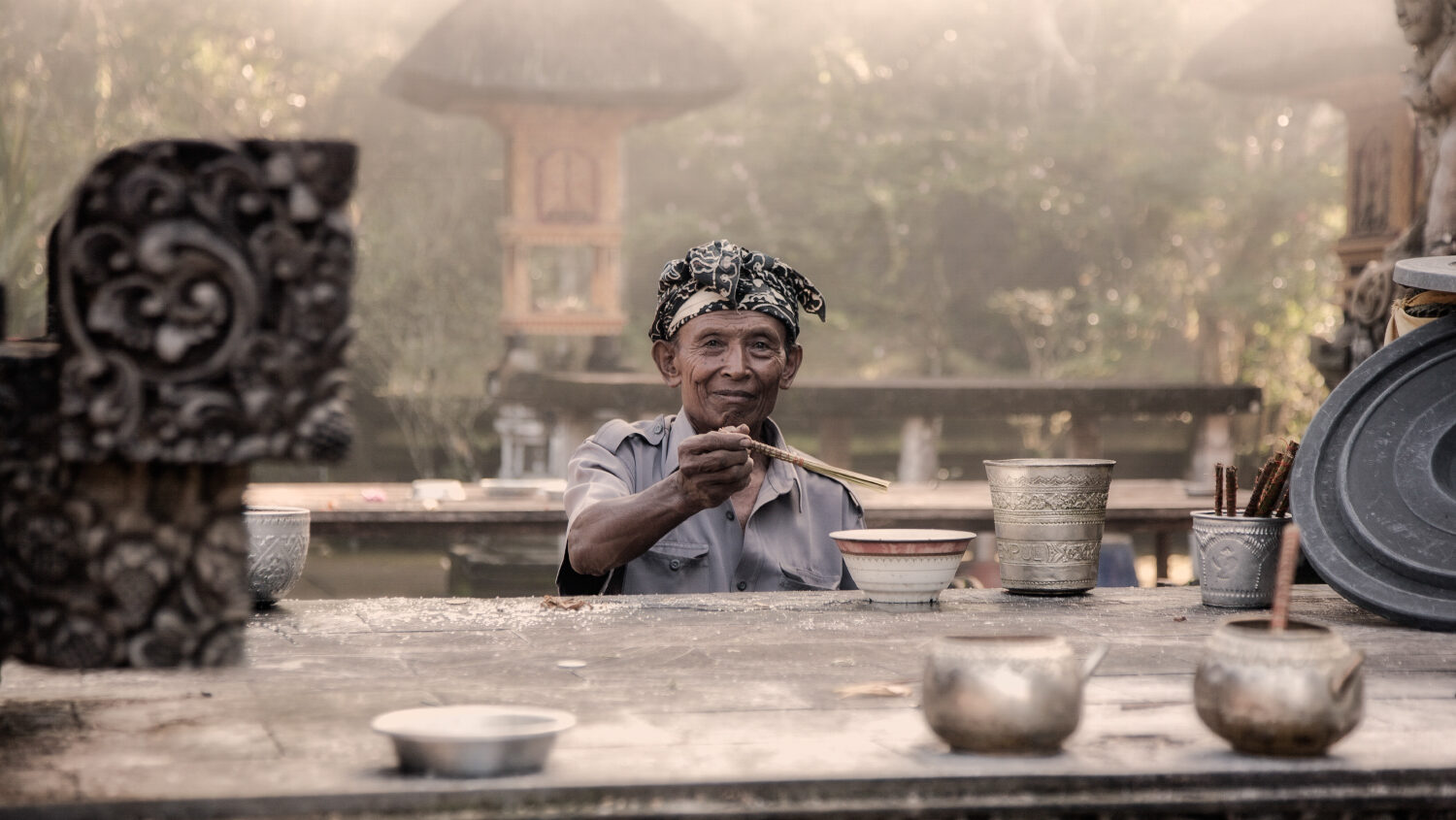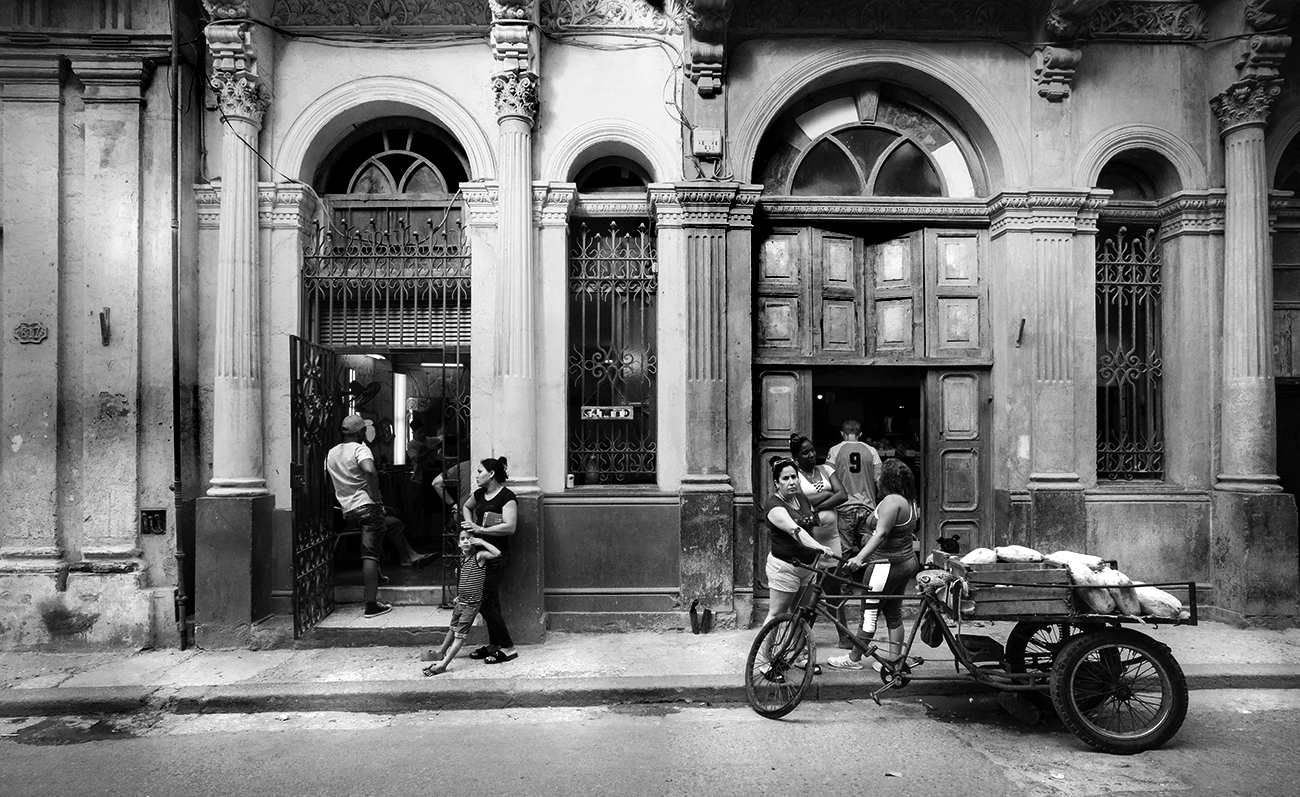The power of Ivan Meštrović is Emotion. The intense emotion of a naked crouching Job with gaping mouth staring toward heaven, his immense eyes gaping at God in terror while a silent howl hangs pregnant in the air as God and the Devil wage their bet.
Meštrović was a sculptor from Croatia, born in 1883. He studied at the Academy of Fine Art in Vienna. He traveled Europe, studied the Masters, and through two world wars he created art. He became famous and acclaimed. He wrote of intimate conversations he had with Michelangelo despite the Renaissance master having died centuries before. Meštrović designed this museum which was meant to be a home and exhibit hall for his work, but he ended up moving to the U.S. and died in 1962. Now this home is a museum in Split, Croatia, up a hill close on the Dalmatian Coast. It is called the Galerija Meštrović. I had never heard of him before. He is full of surprises.
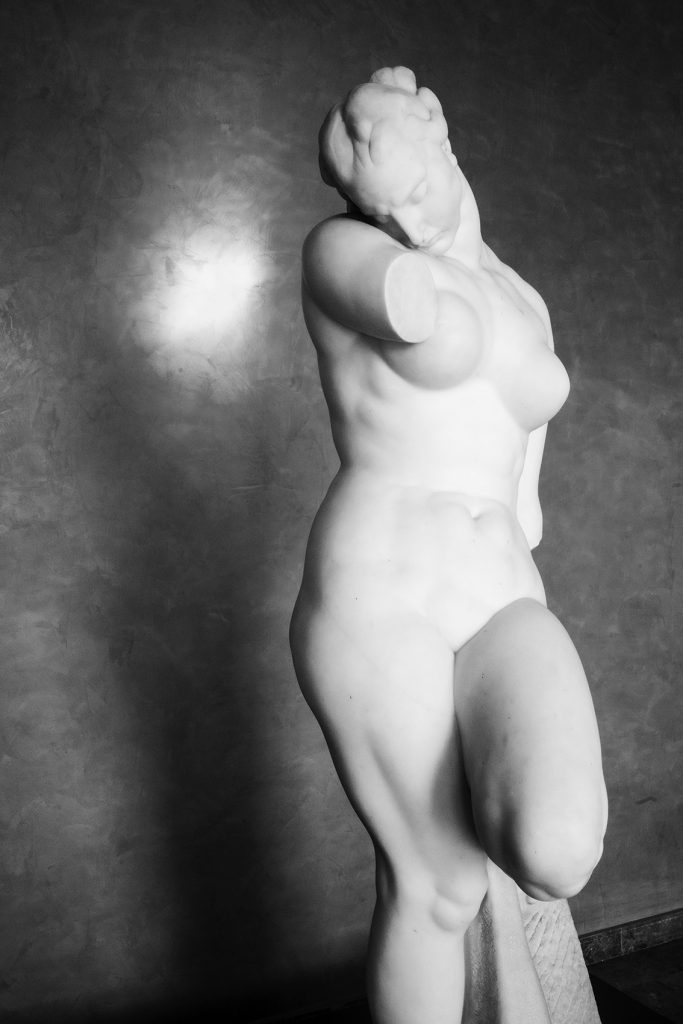
I know the story of Job. I’ve heard it told in words, read it in the bible, yet nowhere had I encountered the raw horror of this story until I stood in front of Meštrović’s sculpture. Let us imagine: one by one the animals in our home die, then our children, our wife or husband comes next. Our crops and plants and trees die, our businesses break and crumble. Our friends abandon us, ashamed and embarrassed, afraid our curse might rub off on them. All for a bet. A wager between the Devil and God.
For God had said, my man is good, my man will not break. (yes, I’m paraphrasing!) Yet, the sculptor Mestrovic shows a seemingly broken man. A man caught in a nightmare beyond words and imagining. But, Mestrovic did imagine it, with intensity and specificity. And he translates the story for us, chiseling away at the formless, so that we may see the truth that lies beneath the bible story. So we may see the horror.
Meštrovic captures Love, especially in his Madonnas. Whether a mother is holding her dead son to her heart or her healthy baby in her lap, her love is rendered hot and soft in hard, cold marble and bronze. The museum assistant told us that a contributing factor to the dissolution of Ivan’s 15-year first marriage was that his wife was unable to have children, and he’d always wanted children. His second wife gave him four. This love for children, and the bond of a mother and father with a helpless infant is evident in his art. The tender love expressed by father and mother with their child on their lap, the way they hold them with a hand, is rendered with an affection and connection sometimes lacking in religiously themed paintings.
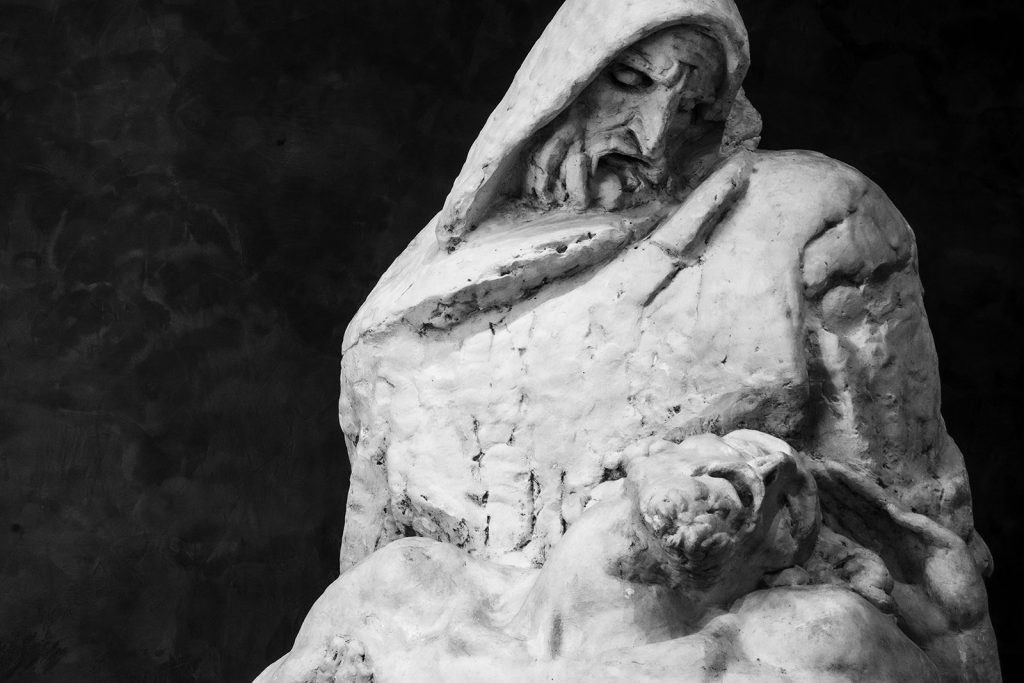
There is a great sculpture in bronze of the freshly dead Christ being lowered down from the cross. Mary, the mother, and Mary Magdalene, (the lover?), wait beneath to embrace him in their arms. The man lowering Christ is large and looms over the cross. As a paramedic for 17 years, I have seen many freshly dead bodies and know the weight of them in the hand. I’ve also pondered religion for three decades and yet, I had never thought about the logistics of removing a crucified body from a cross. Meštrović renders this scene in hard bronze and yet it felt so realistic to me. Alive. The way Christ’s hand lays limp and lifeless. The weight of his dead body while the strong man works to hold it. The sense that the spirit has flown, all life gone from the corpse. The pain of the two women who loved this man and want to hold him in their arms. Whether or not one is Christian is irrelevant. This is an image of the pain of loss. About a young man now dead. About the anguish of that. This is a pain African-American mothers know too well. It is a universal pain that anyone who has lost the love of their life and longs to hold them in their arms pressed tight against their heart, has felt. This is Love.
Yet there is hope too. Meštrović captures this in the chapel he built. It is across the way from the museum, on the seaside, through an iron gate and olive orchard. Workers were fixing the roof, carrying pieces of red clay tile out of the courtyard to replace them with smooth new red ones. A man unlocked the small chapel and let Rob and I in. I was stunned as I stepped inside. I knew nothing about this chapel. Until an hour before I knew nothing about Meštrović. I had no expectations.
The chapel is a dim, narrow rectangle, stone on the outside, yet all tree inside. What I mean is that it is covered in carved wooden panels. They encompass the chapel, depicting the life of Christ. There is Archangel Gabriel presenting a teenage Mary with the choice: “birth a god and have your heart ripped out, or say, “no thank you, I’ll pass.” A few panels down is one of my favorites, Mary looking out at the viewer with a phalanx of angels at her backfilling the entire scene. And on and on the story goes, through betrayal, abandonment, and death until, ultimately, to our great relief, we have the resurrection of a Soul and the rebirth of a God.
For one must die to be reborn.

There is a great carved crucifix that seems to float in the chapel catching the dove-colored light filtering down from somewhere, I don’t quite remember where. What really strikes me is the time Meštrović must have devoted to this work. Years, I imagine of his life, carving form out of the formless void of rich, deep brown tree. Pouring his devotion from his heart, through his hands, into the form. The formless shaped into expression, meaning, hope.
And to think it is all hidden away behind a locked door through an olive grove waiting above the sea.
Text by Gea Haff
Photography by Rob Haff
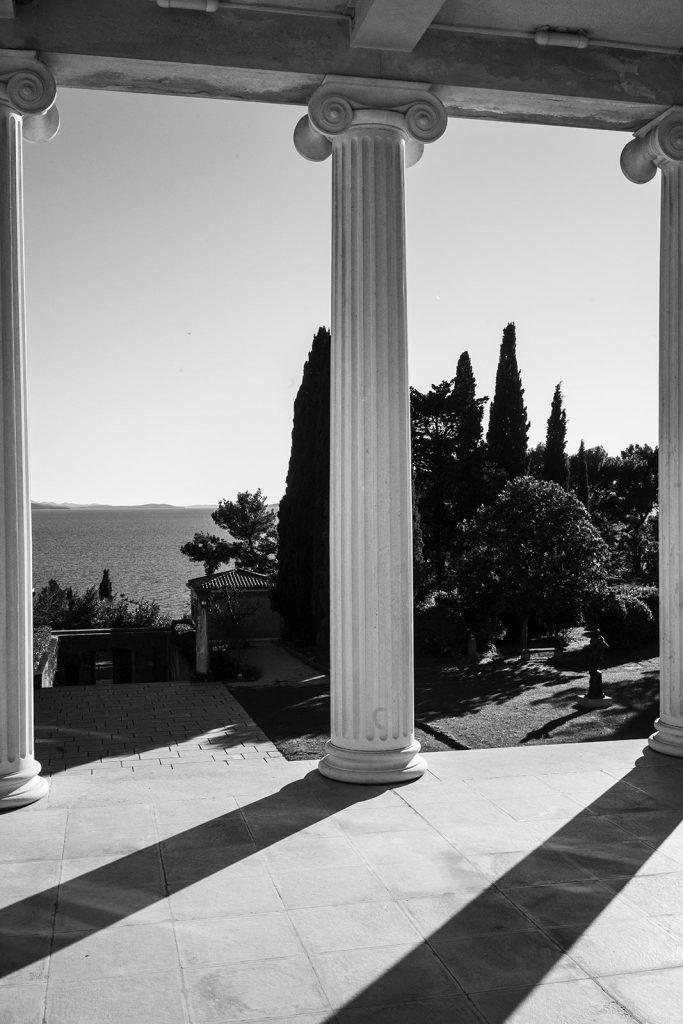
The Meštrović Gallery is an art museum in Split, Croatia, and is dedicated to the work of the 20th-century sculptor, Ivan Meštrović. The gallery preserves and presents to the public the most significant works of Meštrović, and is in itself an art monument.

